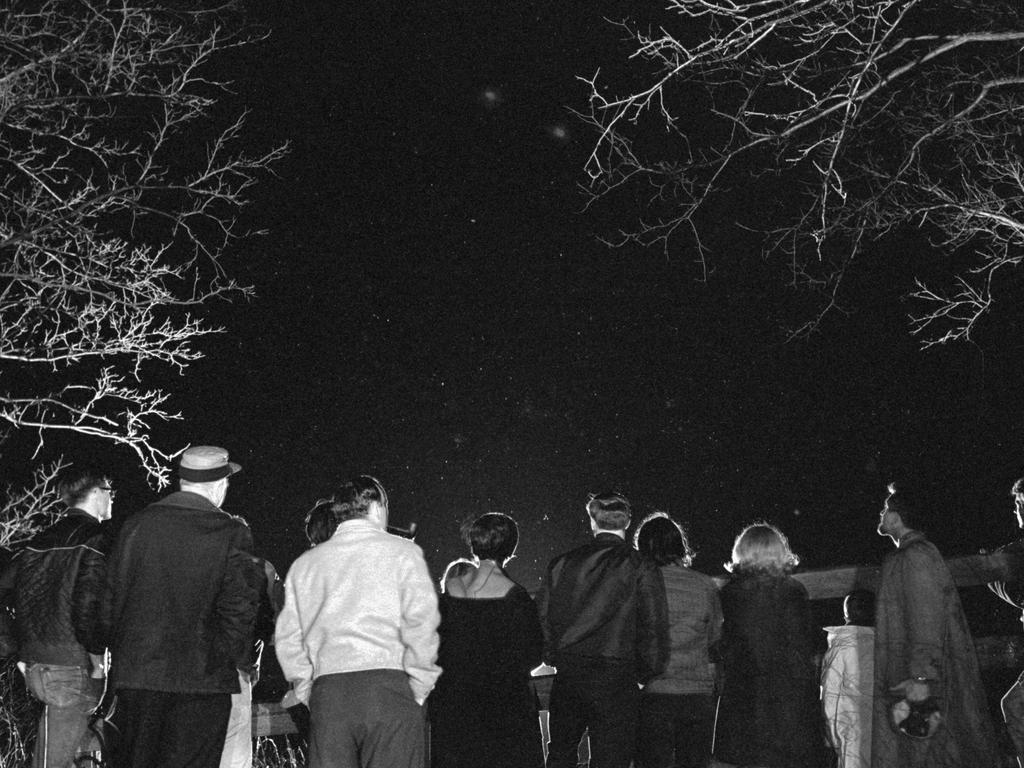Not so fast: US accused of stealing PNG’s ‘alien beads’
PNG authorities say Harvard research team took meteorite fragments from a remote tropical seabed without obtaining permission.

It was celebrated as a scientific triumph of historic significance: the recovery from a remote tropical seabed of what could be fragments of alien technology.
But now authorities in Papua New Guinea are accusing the foreign scientists behind the find of “cheating” their country, after they removed traces of a mysterious meteor without obtaining permits.
Harvard astrophysicist Avi Loeb announced last month that his team had recovered fragments of IM1, a meteor that plunged into Earth’s atmosphere in January 2014, ending up in the sea off Manus Island, 420km north of the mainland of Papua New Guinea.
Because of its toughness and the speed at which it was travelling, Professor Loeb believes that it may be “technological in origin” — in other words, the remnants of a probe or a craft created by an alien civilisation.
Other scientists regard such speculation as premature at best, but Professor Loeb has written excitedly of the possibility of winning the Nobel prize and has booked the huge video screen in Times Square to make an announcement if the evidence bears out his theory.
In PNG, however, there is bafflement and indignation that his team bypassed the conventional licensing channels and removed the meteor fragments without clear agreement as to what benefits a scientific breakthrough might bring to the country. “We’ve been cheated,” says Penua George Polon, Deputy Administrator of Manus province.

“They came here, no one knew about it and now they’ve gone. What have they found? Does it have value? Do we have rights over it? If it’s scientific research, how are our scientific institutions going to benefit?”
The meteor, about the size of a kitchen sink, entered the atmosphere on January 8, 2014, and was detected by US government sensors. By consulting seismograph readings taken on Manus, Professor Loeb and his team narrowed down the estimated point at which it entered the sea and spent two weeks last month trawling the seabed with a magnetic “sled” that attracted metallic particles.
Among them they found 50 “spherules” believed to be from the meteor – metallic beads from 0.1mm to 1mm in diameter, which are now being analysed in the US. Even if they turn out not to be the remains of an alien spacecraft, the fact that the meteor originates from outside Earth’s solar system is in itself very important.
“The discovery of material from an interstellar meteor would be an enormous scientific achievement,” wrote Amir Siraj, one of Professor Loeb’s collaborators. “To put it in context, an estimate for the time it would take to fetch a sample from the nearest star system is comparable to the age of our species. By contrast, nature may have delivered an interstellar gift to our doorstep, which has taken less than a decade to retrieve.”
We’re back from the Pacific ocean! Check out the details in my commentary for @sciamhttps://t.co/w0hM39AQrM
— Amir Siraj (@TheAmirSiraj) July 5, 2023
The scientists sidestepped procedures required to carry out such work in PNG. The National Research Institute that co-ordinates research applications from foreign scientists, said Professor Loeb’s team did not contact it.
Expedition leader Rob McCallum said the team applied for a marine science research permit but this did not cover the recovery of space material.
“Permitting procedures focus on the extraction of existing biological or geological material, which this is not. This research recovered grains of sand that are from outside the area/PNG/Earth, and have no known economic or commercial value,” he said.
Wilson Thompson, of the National Research Institute, said that this was not the point. “It may not have economic value, but it has cultural and intellectual value. If [an alien craft] fell into PNG [territory] it would be remarkable and very significant for us,” he said.
PNG’s immigration department said the scientists may have broken the law by removing rare objects without notifying the state, adding: “Hence, those scientists can be charged criminally.”
The Times







To join the conversation, please log in. Don't have an account? Register
Join the conversation, you are commenting as Logout